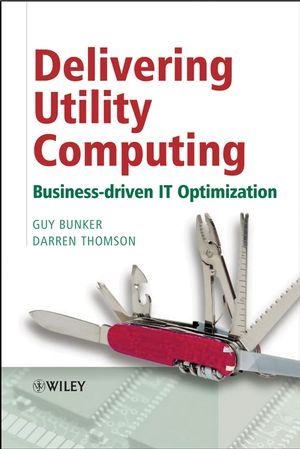Read more
Informationen zum Autor Dr Guy Bunker is a member of the Institute of Electrical Engineers (IEE) and holds a PhD in Computer Science and Artificial Neural Networks from King's College London. His current role is Senior Director of Strategic Engineering at VERITAS, managing the Utility Infrastructure Architecture and Futures team. Prior to joining VERITAS 8 years ago, Guy worked for a number of companies including Oracle where he was lead architect for enterprise application development tools. He is an active member of various standards bodies, including the Global Grid Forum and the Grid Market Awareness Council. Darren Thomson works at VERITAS as a Global Practice Leader of their Utility Computing Practice, responsible for the service development and strategic consulting delivery for companies such as Sky Television. He has also worked at The Morse Group, a European systems integrator focused on the design and implementation of critical IT systems in the Financial Services, Telco and Media industries. As a technical strategist, he has contact with many of today's leading edge companies, including Egenera, VMWare, EMC, Platform Computing and Datacore. Klappentext Learn how to design and deploy utility computing systems to save costs and improve the value that IT delivers.The economic downturn that occurred after the .com boom and bust has put the cost of IT in the spotlight. By following the principles of utility computing, also known as on-demand computing, real-time infrastructure, or adaptive enterprise, businesses can improve the IT services they offer, whilst reducing costs and improving agility. Delivering Utility Computing proposes and documents a methodology for delivering utility computing, and provides detailed advice on its principles and benefits. The authors describe a complete and step-by-step process for adapting to a utility computing system, based on proven methodology.Delivering Utility Computing:* Provides a comprehensive description of the utility model, offering guidance on design, deployment and maintenance issues, and a strong section on service level agreements (SLAs).* Explains in detail how to improve efficiencies and achieve cost reduction in the IT department.* Adopts a thorough approach, taking into account current baselines, phasing, task involved, success factors and best practice principles.* Presents a method rooted in theory, yet broad-based and practical, illustrated throughout with examples and real-world case studies.This invaluable text provides CIOs, CFOs, system administrators, IT policy makers and professionals looking to develop utility computing practices in their organizations, as well as researchers in computer science, statisticians, engineers, and graduate students, with an in-depth understanding of the concepts and practicalities of utility computing. Zusammenfassung Learn how to design and deploy utility computing systems to save costs and improve the value that IT delivers. The economic downturn that occurred after the. com boom and bust has put the cost of IT in the spotlight. Inhaltsverzeichnis Time and IT March on. About the Authors. Foreword. Acknowledgments. Who Should Read This Book and Why? List of Figures. List of Tables. Part One: Introducing Utility Computing. 1 Introduction. 2 What is Utility Computing? 2.1 Overview. 2.2 The Changing Role of IT. 2.3 Utility Computing. 2.4 Return on Investment. 2.5 Why Now? 2.6 It is Not All or Nothing. 2.7 Further Implications of Utility Computing. 2.8 Summary. Reference. 3 Historical Trends, or 'Is Utility Computing Really New?' 3.1 Overview. 3.2 Back to the Beginning. 3.3 Connectivity: The Great Enabler. 3.4 The Web and...

